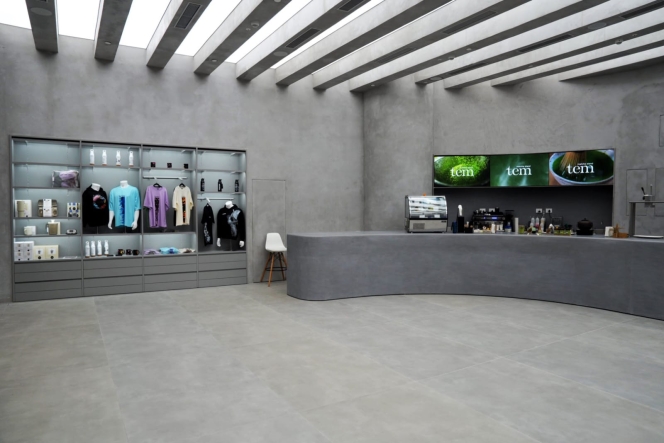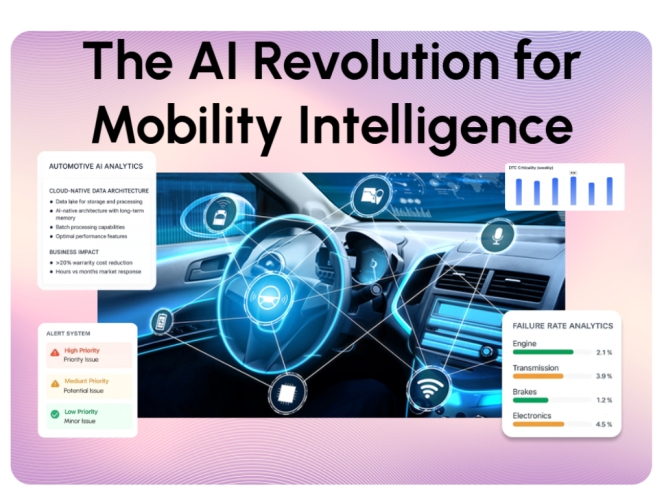Auto components industry’s revenues to grow by 5-7% in FY2024-25
- By MT Bureau
- July 11, 2024

With the liquidity position of the auto components industry comfortable across Tier 1 suppliers particularly, the auto components industry in India is set to witness a revenue growth of five to seven percent in FY2024-25 as compared to the high of 14 percent in FY2023-24.
The stable cashflows and earnings supporting the comfortable liquidity position of Tier 1 suppliers in particular, the auto components industry in the country, according a ICRA Limited’s report will experience an improvement in operating margins – on a year-on-year basis – of roughly 50 bps in FY2024-25. This would be supported by better operating leverage, higher content per vehicle and value additions.
The exposure to any sharp volatility in commodity prices and foreign exchange rates a continuing factor, the ICRA report projects that the industry will incur an expenditure of INR 200-250 billion in FY2024-25 towards capacity expansion and technological developments. Capex is anticipated to hover around eight to 10 percent of the operating income over the medium term. Contribution is also expected from the PLI scheme, which has been designed to exert a localisation push for electric vehicle components and technology.
Providing an over view of ICRA’s take on the performance of the Indian auto industry, Vinutaa S, Vice President and Sector Head – Corporate Ratings, ICRA Limited, mentioned, "Demand from domestic original equipment manufacturers (OEM) constitutes over 50 percent of sales for the Indian auto component industry and the pace of growth in the segment is expected to moderate in FY2025. Growth in replacement demand is pegged at five to seven percent, after two to three years of healthy growth, following a relatively weak Q1 in the current fiscal. Exports, which account for close to 30 percent of the industry’s revenues, are likely to be impacted by subdued growth in end-user markets. Nevertheless, ancillaries will benefit from supplies to new platforms as the global OEMs diversify their vendor base and increase outsourcing.”
The moderation in revenue growth in FY2024-25 expected to stem from a moderation in the growth pace of domestic OEMs, the Indian auto components industry is poised to face the consequences of new vehicle registrations in Europe and the US on the exports front. The markets for vehicles over there are expected to remain tepid over the next few quarters, impacted by the weak global macroeconomic environment and geopolitical tensions.
The rising supplies to new platforms because of vendor diversification initiatives by global OEMs/Tier-I players and higher value addition are expected to drive growth and stability in the auto components industry.
An increase in outsourcing should augur well for the Indian auto component exporters and those suppliers that are into metal casting and forgings will experience better traction as plants in European Union wind up on the back of viability challenges.
The aging of vehicles and rising sales of used vehicles in various markets of the world is expected to ensure good demand for suppliers that are into the aftermarket and export of components for the replacement segment.
Over the medium-to-long term, the ICRA report mentions that stable growth in the auto components space will be fueled by electric vehicle (EV) linked opportunities, premiumisation of vehicles, focus on localisation and changes in regulatory norms.
The disruption along the Red Sea resulting in a surge in container rates by two to three times in the year-to-date 2024 calendar year, the auto components industry will need to proactively track and tread caution from a supply chain point of view the sudden increase in shipping time by about two weeks. About two third of the exports from India are the US and Europe.
“ICRA’s interaction with large auto component suppliers indicates that the industry has incurred a capex of over Rs 20,000 crore (INR 200 billion) in FY2023-24 and is estimated to spend another Rs20,000-25,000 crore (INR 20-25 billion) in FY2024-25. The incremental investments would be made towards new products, product development for committed platforms, and development of advanced technology and EV components, apart from capex for capacity enhancements and upcoming regulatory changes. R&D, though, is still at an average of one to three percent of operating income, significantly lower than the global counterparts. ICRA expects auto ancillaries’ capex to hover around eight to 10 percent of operating income over the medium term, with the PLI scheme also contributing to accelerating capex towards advanced technology and EV components,” explained Vinutaa.
Image for representation purpose only.
MapmyIndia And Zoho Announce Integration For CRM Users
- By MT Bureau
- November 26, 2025

MapmyIndia Mappls, a digital mapping and geospatial technology company, and Zoho, a technology company, have announced a collaboration to integrate two MapmyIndia features directly within Zoho CRM. The features being integrated are Address Capture and Nearby Lead Finder.
The integration allows Zoho CRM users to: capture verified addresses, visualise customer locations, discover potential leads in nearby areas and optimise sales routes. These functions are powered by MapmyIndia’s mapping platform.
Rakesh Verma, Co-Founder, Managing Director & Group Chairman, MapmyIndia Mappls, said, “This partnership between MapmyIndia and Zoho is a true blue Swadeshi celebration – two Indian innovators and leaders in their respective fields - coming together to deliver cutting-edge, homegrown technology that is world-class. MapmyIndia Mappls Address Capture and Nearby Lead Finder capabilities will help Zoho CRM users across India to work smarter and sell better, while keeping all data and innovation safe within India. I am confident that this partnership will boost collaborations amongst Indian tech companies creating a sympathetic ecosystem towards the realisation of an Atmanirbhar, Viksit Bharat.”
Mani Vembu, CEO, Zoho, said, "At Zoho, we believe that true technological progress begins with self-reliance. Building deep-tech R&D from India has always been one of our foundational pursuits, driven by the immense talent and creativity that thrive in the country. Our partnership with MapmyIndia embodies this vision, uniting homegrown expertise in business software and digital mapping to deliver solutions that are powerful, privacy-focused and proudly indigenous. This integration empowers Indian businesses by combining business intelligence with spatial intelligence, giving field teams the location-aware insights they need to better serve their customers."
Toyota Kirloskar Motor Opens Experiential Museum In Bengaluru
- By MT Bureau
- November 24, 2025

Toyota Kirloskar Motor (TKM) has unveiled the Toyota Experiential Museum (TEM) in Bengaluru, which it said is a new cultural and lifestyle hub for the company. The space combines Indian philosophy with Japanese culture and technology.
Located on the ground floor of the Phoenix Mall of Asia, TEM is spread across 8,200 sq ft and offers a five-senses experience, blending Japanese minimalism with Indian warmth through visuals, sounds, scents, textures and flavours.
Tadashi Asazuma, Deputy Managing Director, Toyota Kirloskar Motor, said, “At Toyota, our vision of creating ‘Happier Paths Together’ goes beyond mobility – it is about inspiring experiences that connect people, cultures, and emotions. With TEM, we hope to offer a truly unique experience that embodies this spirit.
In India, we found inspiration in the practice of Sadhana – the mindful pursuit of inner balance and fulfilment. TEM is where the Japanese culture and values of precision, serenity, and respect for nature beautifully align with the spirit of Sadhana, making TEM a meaningful blend of both. Designed to engage the senses and spark reflection, it brings together art, technology, and craftsmanship to inspire mindfulness, especially amongst the youth.”
The museum features minimalist interiors and distinct aesthetics designed to spark curiosity, inviting guests to explore at their own pace. The journey begins with a mirrored and rhythmic experience of the changing seasons common to Japan and India, unfolding through infinite projections of light, colour and motion. It then rises into a celebration of shared passion, featuring an audio-visual collaboration with DRUM TAO. A display includes a water curtain encircling a car draped in satin.
A design cafe offers a range of merchandise blending heritage with contemporary lifestyle, celebrating simplicity and craftsmanship.
The TEM cafe features a curated menu that blends the Japanese tradition of matcha with Indian flavours. Highlights include the India-inspired mango infusion.
- Maruti Suzuki India
- Maruti Suzuki Innovation Fund
- Ravity Software Solutions
- Sociograph Solutions
- Amlgo Labs
- Hisashi Takeuchi
- Vikas Rungta
Maruti Suzuki India Invests INR 20 Million In Ravity Software Solutions
- By MT Bureau
- November 21, 2025

Maruti Suzuki India (Maruti Suzuki) has announced an investment of nearly INR 20 million to pick up 7.84 percent stake in Bengaluru-based mobility insights start-up Ravity Software Solutions. The start-up claimed to be a global platform for AI-driven connected mobility intelligence, which transforms vehicle data into business value.
This marks the automaker’s third such move through ‘Maruti Suzuki Innovation Fund’, which makes strategic investments in innovative and high-potential start-ups that can support Maruti Suzuki India’s operations.
The company made its first investment of INR 20 million in Sociograph Solutions in June 2022, followed by the same amount in Amlgo Labs in March 2024.
Hisashi Takeuchi, Managing Director & CEO, Maruti Suzuki India, said, “Aligning to our core value of keeping customer at the core of our business, we are focused on enhancing vehicle ownership experience. In the age of open innovation, we strive to co-create business solutions with specialized entities operating in the particular field. Startups are ideal partners as they bring agility, fresh thinking, and cutting-edge solutions, to support our goal of ensuring customer delight. Our investment in Ravity Software Solutions will enable us to elevate customer experience through data-driven insights. We have been associating with startups since 2019 under our Maruti Suzuki Innovation programs. Through this initiative, we are investing in a culture of innovation, building strategic partnerships, and unlocking new opportunities, in line with Government’s ‘Startup India’ initiative to promote entrepreneurship in the country.”
Vikas Rungta, Founder, Ravity Software Solutions, said, “It is an honour to be associated with an industry leader like Maruti Suzuki, whose name is synonymous with bringing personal mobility to millions in India as well as across the globe. An automobile major like Maruti Suzuki partnering with a startup speaks volumes about its forward-thinking mindset, humility, and openness to learn and collaborate to explore new ideas. With our excellence and expertise in AI, analytics and mobility, we are committed to upholding the trust Maruti Suzuki has placed in us. We believe that the high complementarity of our strengths: Maruti Suzuki’s scale of business and our agility and entrepreneurship, will further enhance customer experience and delight.”
LG Display Wins Two CES 2026 Innovation Awards For Automotive Display Technology
- By MT Bureau
- November 21, 2025

LG Display has secured two CES 2026 Innovation Awards from the Consumer Technology Association (CTA) for two automotive display innovations: Dual View OLED and Under Display Camera-infrared (UDC-IR) OLED.
Both products were honoured in the In-Vehicle Entertainment category for delivering space efficiency, superior picture quality and high standards of safety.
The Dual View OLED solution allows a single automotive display to show different content based on the viewing position. For example, the driver can view navigation while the front passenger streams content. Optimised pixel structure ensures the driver’s touch operation does not interfere with the passenger’s entertainment. The product utilises a Tandem OLED device structure for picture quality and operates reliably in environments ranging from -40deg C to 85deg C.
The UDC-IR OLED jointly developed with LG Innotek, is claimed to world’s first full-screen automotive display to conceal an in-screen driver-monitoring camera. LG Display developed advanced algorithms that make the camera hole invisible from the driver’s viewpoint. The camera integrates LG Innotek’s high-resolution IR camera and image-enhancement software to ensure accurate driver monitoring, which is becoming mandatory due to global safety regulations.
LG Display will showcase these solutions at a dedicated booth at CES 2026. The company has consistently won CES Innovation Awards, previously honoured for its Thin Actuator Sound Solution (CES 2023) and its 57-inch Pillar-to-Pillar LCD (CES 2024).






Comments (0)
ADD COMMENT